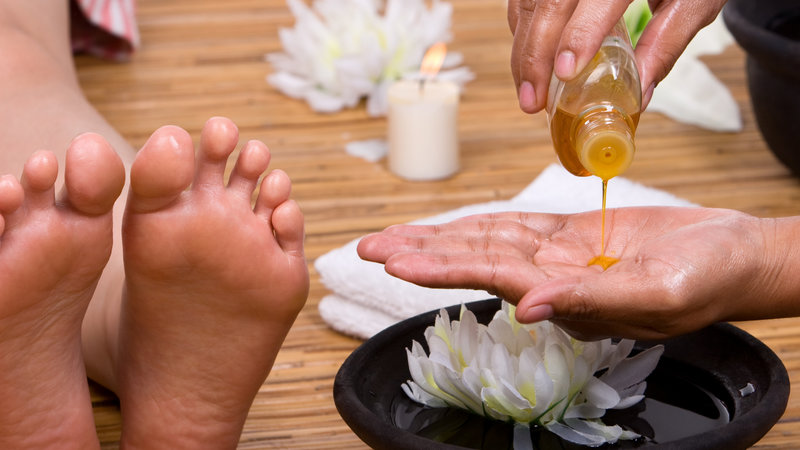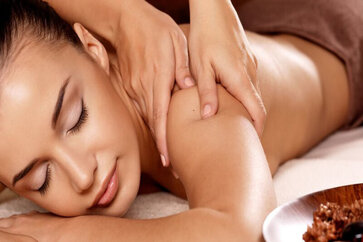Which Ayurvedic Oil Is Good For Your Body Massage?
Ayurvedic beauty secrets are of interest not only to those who are fond of oriental practices or alternative medicine but also to everyone who likes to try different methods of caring for their body. Among the simple actions that have a beneficial effect on health is daily self-massage oil, which increases resistance to diseases, improves the functioning of the senses, slows down the aging process of the skin, and is so necessary throughout the fall and winter.
Among the simple actions that have a beneficial effect on health is daily self-massage oil, which increases resistance to diseases, improves the functioning of the senses, slows down the aging process of the skin, and is so necessary throughout the fall and winter.
First Step: Determine the dosha
Ayurveda (translated from Sanskrit as “the science of life”) is the traditional system of Indian medicine, which includes, among other things, treatment and body care using oils and herbal powders.
The Western beauty world liked the unusual self-care using mixtures of aromatic oils, but now stores offer a large selection of Ayurvedic body care oils that not only nourish the skin but also give a good mood.
The first condition for healing in Ayurveda is the understanding of three doshas – sets of characteristics inherent in your body and character.
There are only three doshas
- Vata: Air and everything that moves and moves. The man of this dosha is intelligent, talkative, active, and quickly fulfilling his work, an enthusiast. Vata-type women are slim and graceful. They have practically no fat, they have small breasts, long legs, narrow hips, rectangular shoulders, and thin hands.
- Pitta: Fire and fiery energy. A man of this type is an ambitious, efficient, punctual, irritable stubborn man who adores order. Purposeful and self-critical. Pitts have a proportional physique, they have well-developed muscles. Women of this type easily gain weight, but also easily lose weight. They have a magnificent chest, smooth beautiful hips, with a narrow waist, slender legs, and hands of medium thickness. On the face, there may be freckles, moles, and blush.
- Kapha: A combination of land and water. Kapha is the proprietor. They live and work slowly, without straining. They are attentive to trifles, down to earth, mercantile, and economical. They can be stingy, but they are never poor. Kapha women have a healthy, strong body. They have strong muscles and heavy, wide bones. They are prone to fullness. Due to slow metabolism and poor digestion, overweight is difficult to lose.
In the individual constitution of each of us, one or two doshas prevail, which are in constant interaction in the body. Indian philosophy states that doshas regulate all the biological and physiological processes of our body.
When they are in balance, we feel good and are physically healthy. In the case of imbalance, we get sick. The main goal of Ayurveda is to maintain a balance of three doshas with the help of different techniques, exercises, and food.
You can determine your dosha by using online tests, consistently and honestly answering questions about your physical characteristics and personality aspects.
The Second Step: We select the base & essential oils for body care
Ayurveda recommends the use of various cold-pressed vegetable oils that have moisturizing, bactericidal properties and are rich in nutrients. Penetrating deep into the skin, oils rejuvenate and nourish it.
You can use specially prepared oils or use base oils by adding essential oils to them. For 100 ml of base oil, it is recommended to use up to 20 drops of essential oil, after conducting a test for allergic reactions on the internal bend of the elbow.
Note! Do not use old or rancid oils – they contain free radicals that accelerate the aging process.
Base oils are also called carrier oils, base oils for skin care of the face and body. They are used for dissolving essential oils and for independent use. Dissolving essential oils in themselves, base oils transport them to the deeper layers of the skin.
According to Ayurveda, base and essential oils are selected depending on the type of dosha and the problem that needs to be addressed.
Popular Base Oils:
- Sesame: One of the most commonly used oils in Ayurvedic massage. Sesame oil weakens vata, strengthens pitta and kapha. Useful for dry skin. In addition, after a massage with sesame oil, a night of deep and healthy sleep is guaranteed!
- Coconut: Weakens pitta and vata, strengthens kapha. Coconut also softens and nourishes the skin, gives shine to hair, cools, and tones.
- Avocado oil: Reduces vata, strengthens kapha, and pitta. This oil is recommended for dry skin of the face and body. It improves hair growth and protects the skin from the harmful effects of sunlight.
- Corn: Most suitable for kapha and vata dosha and for all skin types.
- Olive: Reduces the level of vata and pitta, strengthens kapha. It is rarely used in massage because of its stickiness, viscosity, and heaviness.
- Almond: Most useful for people like cotton wool. It is popular during massages – it is well absorbed without leaving a greasy film, tones the skin.
- Castor: It has a special nutritional value and has a positive effect on the whole body. Used to reduce cotton wool.
- Mustard: It has antiseptic properties, strengthens the skin, and helps to fight excess weight. Recommended for arthritis. Reduces vata and kapha dosha, strengthens pitta.
Popular Essential Oils
(used only when dissolved in base oils):
- Clove (flower): It is used to eliminate pain in joints and muscles. Clove also has an antiseptic effect, helps wound healing. Suitable for vata and kapha dosha.
- Mint: Helps to eliminate nervous excitement, relieves fatigue, improves mood, and balances the mind.
- Fir tree oil: Used for radiculitis, neuritis, and neuralgia. It improves mood and inspires optimism.
- Sandalwood: It is known for its cooling effect and is used for increased irritability and sleep disorders. During the massage, sandalwood oil helps create an atmosphere of harmony and pleasure. Suitable for vata and pitta dosha.
- Lavender: It has a cooling nature and is used for overexcitation of the nervous system, high blood pressure, and insomnia. Pitta is especially recommended.
After you take into account the recommendations for selecting oils depending on the types of dosha, we recommend that you pay attention to your skin type:
1. For dry skin: Best suited oil is anise, sandalwood, orange, chamomile, patchouli, geranium oil to the base.
2. For oily skin: Best suited oil is grapefruit, lemon balm, lemon, rosemary, clove, lemongrass, cypress oils are recommended.
3. For combined skin oils: Best suited oil are ylang-ylang, peppermint, neroli, rosewood; sandalwood, rose, neroli, rosewood, frankincense, pine, myrtle oil will improve the condition of aging skin.
Remember that properly selected oils will not only help to tidy your skin, but also improve your mood. For example, with confusion and depression, exhaustion, loss of strength, and insomnia, the vata dosha goes out of balance.
In such cases, warming heavy oils are suitable for you, including sesame, almond, and linseed. With irritability, anger, increasing hunger, and thirst, an excess of pitta is observed.
You can correct the situation with the help of cooling oils – coconut, sunflower. If you feel lethargy, weakness, heaviness in the body, then we are talking about an excess of kapha. In this case, prepare light warming oils – corn, mustard.
Ghee
Ghee, according to Ayurveda, has amazing healing properties. There is an opinion that solar energy is concentrated in this oil, therefore the second name of ghee oil is liquid gold. Ghee calms all three doshas and is extremely helpful.
Ghee oil has a warming property, so they are recommended to rub their palms, feet, joints. You can use ghee with hypothermia, colds, bad mood, and weak immunity.
This tool is also indispensable for relieving skin inflammation, moisturizing, and nourishing it. It is best to apply the oil half an hour before going to bed before going to the shower.
Note: Ayurveda recommends ghee which is only made of cow milk also known as desi ghee in Hindi.
Ghee ghee can be prepared independently at home
Step by step recipe:
- Choose high-quality butter with a fat content of at least 80%;
- Melt the butter in an enameled bowl over low heat;
- When the oil has completely melted, make the fire minimal;
- Stir the oil with a stainless steel or silver spoon;
- Carefully collect white foam formed on the surface;
- It is not necessary to remove a small precipitate at the bottom in the form of light flakes;
- No need to close the pan;
- Make sure that the oil does not boil – so it can burn;
- The color of the finished ghee oil is golden, amber;
- The dark color of the oil indicates that it was drowned for too long or over high heat;
- Filter slightly cooled oil through cheesecloth;
- Store ghee at room temperature in a cool, dry place.
Ghee, according to Ayurveda, is ideal as a base oil for all skin types.
Step Three: Oil self-massage
The essence of the procedure is extremely simple – the oil is evenly applied to the whole body from head to toe, and after 15 minutes it is washed off. It is believed that the daily oiling of the body can prevent the aging process and prolong youth.
For the procedure, you need to arm yourself with oil (a mixture of basic vegetable and essential or ghee oil) and a cleansing paste to remove oil from the body. In India, ubtans are used for this purpose – cleansing powders created on the basis of chickpea, almond, cornflour, and medicinal plants and spices ground into powder.
At home, you can use oatmeal flour, horse gram flour, or any wholemeal flour in combination with herbal powder. The mixture absorbs excess oil, and a soft peeling will give you an unforgettable experience. Wash off the oil from the hair with undiluted shampoo in two steps.
Warm oil is applied to the cleaned body. Apply it in the following order:
- Circular movements on the hair and crown.
- Soft and light movements on the face and ears.
- Movements from top to bottom – on the collarbone.
- Circular and longitudinal movements – on the hands and hands.
- In wide circular movements – on the chest and lower abdomen.
- Active movements up and down – on the back.
- In circular motions on joints, longitudinal in the direction of the leg bones.
- Apply oil to the feet and toes.
Among the contraindications to Ayurvedic self-massage are nasal congestion, swelling of the body, pregnancy days, colds, fever, lack of hot water.


























